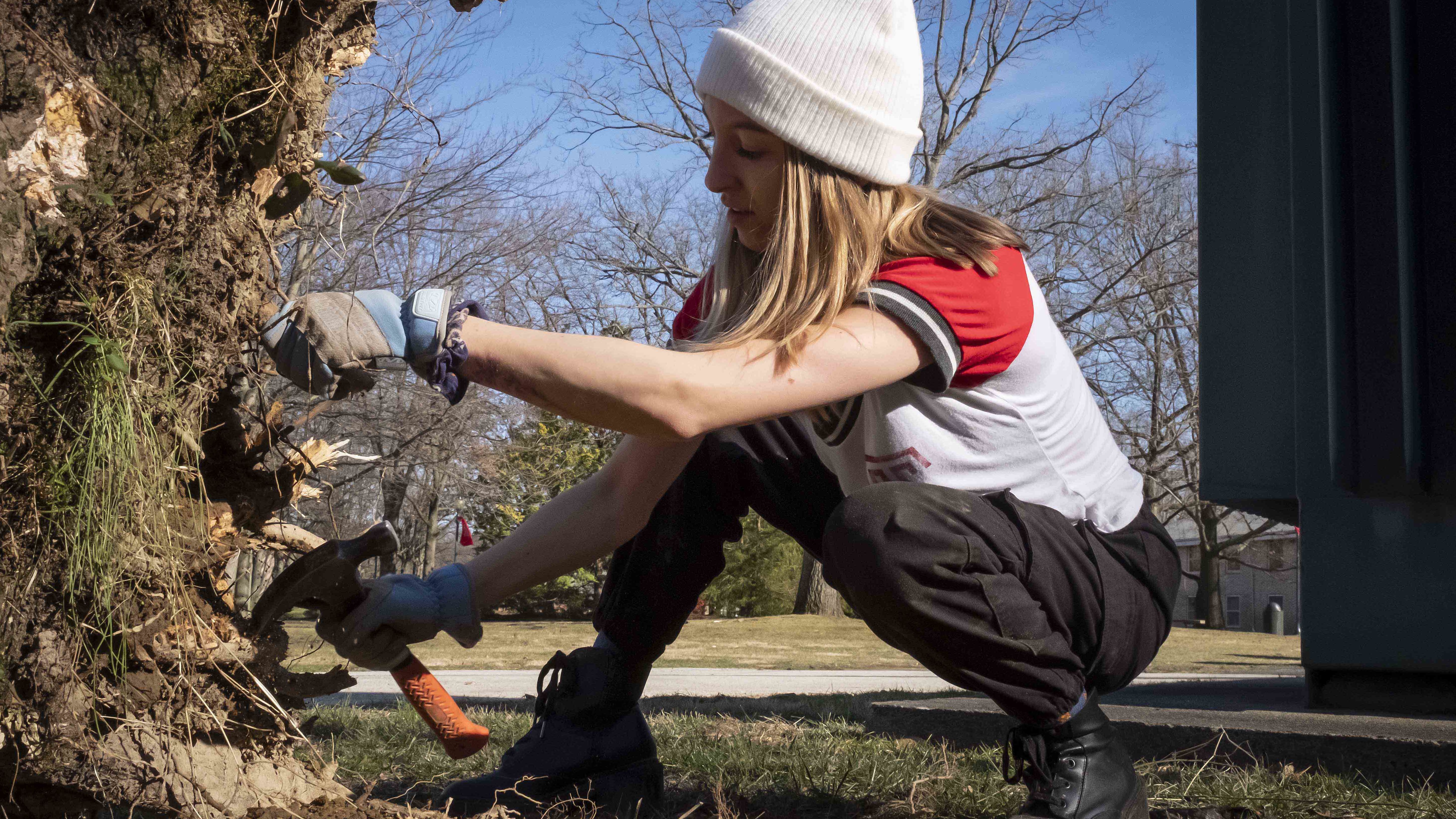Temple invites Flower Show visitors to 'ungarden' their gardens
Temple's 2020 Philadelphia Flower Show exhibit proposes a new approach for suburban tracts.

At the 2020 Philadelphia Flower Show, Temple University landscape architecture and horticulture students and faculty are inviting visitors to rethink their notions about the suburban landscape.
Instead of well-manicured, chemically controlled lawns and over-managed trees, shrubs and plants, Temple’s exhibit, “Course of Action: A Radical Tack for Suburban Tracts,” portrays ungardened suburban terrain that attracts wildlife, cultivates resilience through diversity, and appreciates restraint and the viability of repurposed building materials.
The exhibit won the 2020 Philadlephia Flower Show Gold Medal and the Alfred M. Campbell Memorial Trophy.
“When you take a look at most neighborhoods, they are very manicured. I think with a lot of people the idea of an ‘unkempt’ lawn means they’re not a good citizen or a good neighbor,” said Adjunct Assistant Professor Michael LoFurno, who is coordinating Temple’s 2020 exhibit with Associate Professor of Landscape Architecture Rob Kuper and Greenhouse Horticulturist Benjamin Snyder.
“For many, it’s ‘mow, blow and go’ without consideration for the other creatures we share the planet with,” he added. “In that type of environment, how do the earthworms or salamanders get around; how do animals move from place to place or find shelter?”
Exhibit organizers drew inspiration from the concept of ungardening presented in Sara Stein’s Noah’s Garden: Restoring the Ecology of our Own Back Yards. “With this exhibit, we are trying to introduce the concept of allowing animals and other organisms in, reducing the use of resources—particularly fossil fuels—and enhancing diversity and chance,” explained Kuper.
“You can have a meadow, you can have a corner woodland,” he added.
Visitors entering Temple’s exhibit will be welcomed by a hedgerow of trees and shrubs. As they walk through the exhibit’s pathways, a 10-foot screen incorporating red osier dogwood will give way to a corner woodland, which includes logs that demonstrate home mushroom farming techniques. Eventually, a woodshed shows the contributions of a green roof followed by a meadow and a natural swimming pool.
“All of the aspects in the exhibit this year could be replicated at home,” Kuper said. “Some of our educational themes include creating hedgerows along property lines rather than fence after fence. A corner of the backyard could be transformed into woodlands with the hedgerows connecting them, providing safe avenues for animals to travel.”
The natural swimming pool is one of the primary water features of “Course of Action.” Rather than chlorine and other chemicals, a natural swimming pool relies on plants to filter and oxygenate the water.
“The natural pool is a European concept that has been around for decades that is slowly catching on here. It’s essentially a pool that is free of chemicals that can be enjoyed by humans as well as other types of species,” said landscape architecture major Abigail Long, Class of 2021, who is part of the team creating the pool.
This is the third year students and faculty have been able to create their Flower Show exhibit within the large dedicated design-build studio space in Bright Hall at the Temple Ambler campus.
“Now, for the most part, we’re all together and able to collaborate on all aspects of the exhibit,” said Kuper. “It improves the teaching experience while also providing the program with greater visibility and a stronger identity and connection with the campus community.”
Landscape architecture major Fiona Eickman, Class of 2021, said her experience within the design-build studio has been extremely beneficial.
“It is a tremendous experience to be able to build something with our hands and learn how to use the tools, creating an exhibit that potentially hundreds of thousands of people will walk through,” she said. “As a student, it’s one of the most rewarding and validating experiences I can think of.”
—James Duffy